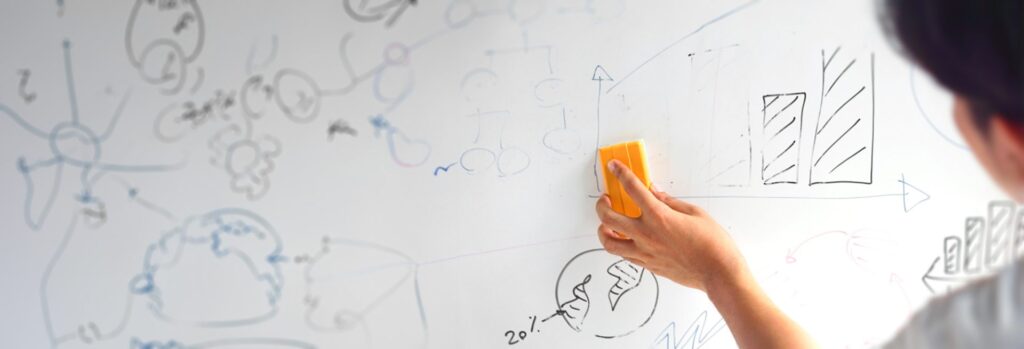
Gloria Mark, Ph.D is Chancellor’s Professor of Informatics at the University of California, Irvine and has become one of the world’s foremost thought-leaders in the field of where work focus and technology meet. Her findings might surprise you: it’s not all our phones’ fault. Below we introduce some new ideas she’s presented and we highly recommend her book Attention Span.
“Like Chasing a Greased Pig”
Gloria Mark has seen mountains of interesting data as it relates to people in the workplace trying to focus on a single task. One of her research subjects told her in an email that trying to focus on one task at work was “like chasing a greased pig” as distractions piled upon other distractions from email, phone calls, co-workers, their phone, and more.
Technological distractions aren’t new but Dr. Mark may be on to something much more revealing about why technology can create such strong temptations to lose focus and how certain human impulses may lead to poor mental health if uncared for. She unveils how individuals constantly oscillate between tasks, often without realizing the toll this takes on their productivity and well-being.
There’s a paradoxical behavior prevalent in workplaces: instead of dedicating uninterrupted blocks of time to tasks, individuals engage in a fragmented workflow characterized by frequent switches between activities. This phenomenon, akin to “restless animals pacing in a cage,” reflects a lack of sustained focus and a tendency towards circular, repetitive behaviors.
Central to Mark’s findings is the pervasive influence of digital devices and communication channels on work habits. The ubiquitous nature of smartphones and email platforms has normalized a compulsive need to check for updates, messages, and notifications incessantly. Mark’s research indicates that information workers check their email an astonishing 77 times a day on average, with some individuals exceeding this frequency to alarming extents, such as one participant who checked email over 400 times in a single day.
Nested Interruptions
The allure of quick, seemingly harmless distractions often leads individuals down a rabbit hole of nested interruptions. Mark describes this pattern as a cascade of interruptions, where individuals are continually diverted from their original tasks by subsequent distractions. Contrary to the common assumption that people seamlessly return to their initial tasks after interruptions, Mark’s research demonstrates that reorienting oneself to the original task requires considerable time and mental effort.

According to Mark’s data, individuals spend an average of 10.5 minutes on a task before being interrupted and switching to something else. Moreover, the process of returning to the original task consumes an average of 25.5 minutes—a stark reminder of the disruptive nature of interruptions in the workplace. These findings underscore the pervasive impact of interruptions on workflow efficiency and overall productivity.
Perhaps the most intriguing aspect of Mark’s research is her exploration of self-interruptions. Contrary to conventional wisdom, which often attributes distractions to external factors such as colleagues or technological devices, Mark reveals that individuals frequently interrupt themselves without any external stimuli triggering the behavior. This self-interruption phenomenon highlights the profound influence of internal cues, such as memories, boredom, or fleeting impulses, on work behavior.

Free Book Through Kindle
Get Attention Span on Kindle for free as well as other audiobooks for 3 months in a limited-time offer.
Many Interruptions are Self-Inflicted
Mark’s research challenges traditional notions of workplace distractions by illuminating the multifaceted nature of interruptions. Rather than viewing interruptions solely as external disruptions, Mark emphasizes the role of internal factors and individual behaviors in shaping work habits. By acknowledging the prevalence of self-interruptions, organizations can adopt more nuanced strategies to promote sustained focus and mitigate productivity losses.
Moreover, Mark’s insights have profound implications for designing effective work environments and technological interfaces. Recognizing the detrimental effects of constant interruptions, organizations can implement measures to minimize distractions and create conducive spaces for focused work. Whether through optimizing digital interfaces to reduce cognitive load or implementing structured time management techniques, Mark’s research offers actionable strategies to enhance workplace focus and productivity.
As External Stimuli Decreases, Self-Interruption Increases
Mark’s research sheds light on a pervasive phenomenon in modern workplaces: the prevalence of self-interruptions. Contrary to conventional wisdom that attributes distractions solely to external triggers such as notifications or phone calls, Mark reveals that individuals frequently interrupt themselves without any external stimulus. This self-interruption behavior stems from a deeply ingrained habit of constantly switching between tasks, fueled by an internal clock that prompts individuals to seek out new stimuli after a brief period of focus.
Moreover, Mark’s findings highlight an intriguing correlation between external interruptions and self-interruptions. When the frequency of external interruptions decreases, individuals compensate by increasing self-interruptions—a phenomenon suggesting a subconscious desire to maintain a certain level of cognitive stimulation. This intricate dance between external and internal interruptions underscores the complex interplay between our cognitive processes and the environment in which we operate.
Through vivid anecdotes and personal experiences, Mark elucidates the subtle ways in which self-interruptions manifest in everyday life. From pondering the safety of non-organic strawberries during a reading session to embarking on a series of online inquiries that lead down unforeseen rabbit holes, Mark’s anecdotes resonate with the universal struggle to resist the allure of distractions in an age of information overload.
Attention Residue
Central to Mark’s research is the concept of attention residue—a metaphorical whiteboard in the mind that retains traces of previous tasks, creating interference when switching to new activities. This cognitive phenomenon elucidates the hidden costs of multitasking and task-switching, as individuals grapple with lingering thoughts and distractions from previous tasks even as they attempt to focus on new endeavors.

Furthermore, Mark’s research extends beyond the realm of productivity to explore the implications of distractions in high-stakes environments such as healthcare. Drawing on studies that highlight the detrimental effects of interruptions on physicians’ performance and patient safety, Mark underscores the critical importance of sustained focus in professions where errors can have life-threatening consequences.
In summary, Gloria Mark’s research offers a nuanced understanding of the intricate dance between focus and distractions in modern work life. By unraveling the complexities of self-interruptions, attention residue, and their impact on cognitive processes and performance, Mark provides valuable insights for individuals and organizations striving to navigate the challenges of an increasingly fragmented and distracting work environment. As we continue to grapple with the demands of a digital age characterized by incessant stimuli, Mark’s research serves as a guiding beacon, illuminating pathways toward cultivating mindfulness, resilience, and sustained focus amidst the turbulent waters of distraction.





